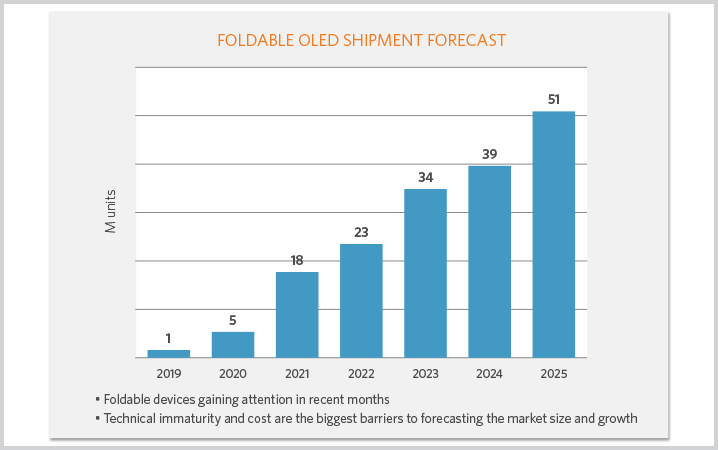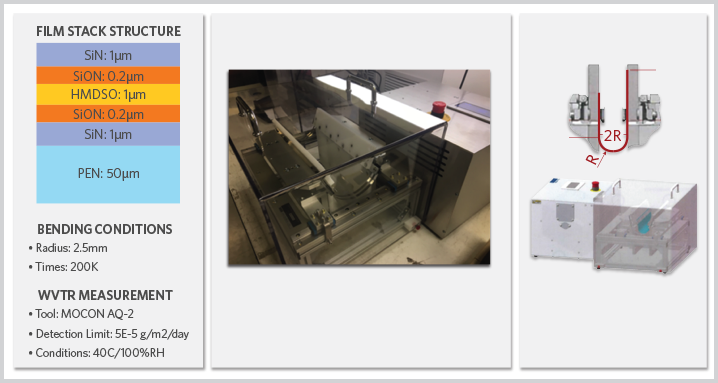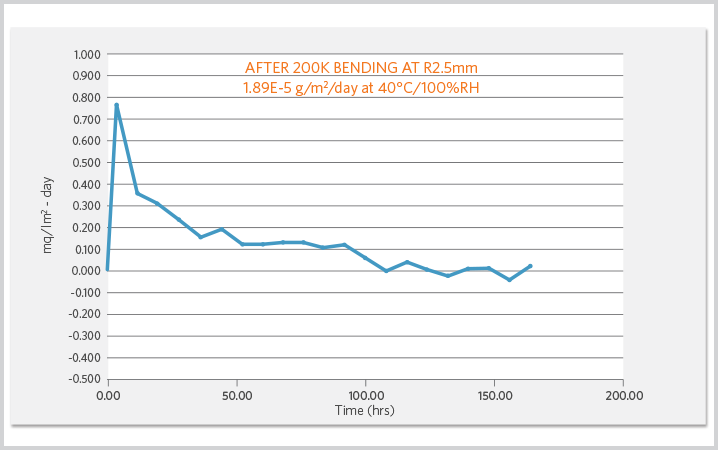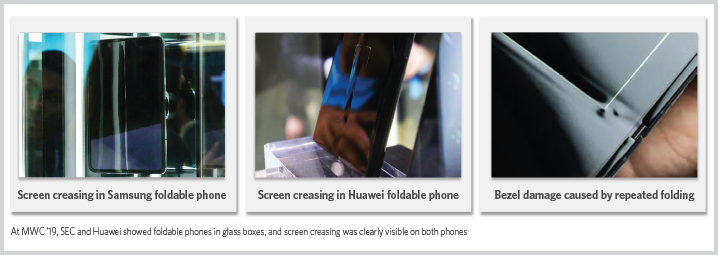Products & Technologies
Back to Menu
Products & Technologies
Services
Resources
TABLE OF CONTENTS
AI Will Enable Next-Generation Quality Systems
Applied and SC Solutions Partner on Real-Time Profile Control for 200mm CMP
Foldable Phones Bend the Limits of Technology
Subject Matter Expertise is Critical for Smart Manufacturing Analytics
The Future of Power Needs to be Exotic
FOLDABLE PHONES BEND THE LIMITS OF TECHNOLOGY
By Kerry Cunningham
After years of discussion about flexible, bendable displays for mobile electronic devices, the first and most logical of these devices, foldable phones, will hit the market this year— along with some as yet unresolved issues and challenges. Early adopters welcome the introduction of such exciting new technologies (figure 1). But from a broad industry standpoint, which mobile phone designs will win with consumers? And what technologies and technical obstacles must be conquered to enable their mass production?

Figure 1. Foldable device-types. (Image sources clockwise from top left: Technobezz, itechfuture, mspoweruser, Forbes)
A number of issues must be resolved in the development of foldable phones or other devices, including battery life, form factor, manufacturing costs and price. Of course the most obvious and difficult problem is the development of displays that can support frequent bending, because users will open and close their devices frequently over a number of years. All these issues are reviewed in this article.
BATTERY LIFE
The coolest feature of the foldable photo–tablet type phone also causes a major issue with battery life, because it makes use of two displays that need battery power. A smartphone with a typical 4,380 mAh battery may have power for two days depending on use, but more power is required to run an additional >7-inch mini tablet screen. Folding and unfolding, along with the transition between screens, also eats up power. Thus, the consumer is left with either shorter battery life or a thicker, heavy phone with bigger batteries.
FORM FACTOR
The trend in mobile smartphones has been toward larger screens and overall thinner phones, features that have evolved with OLED adoption and better battery technology. But will consumers be happy with a phone in their pocket that is twice as thick as what they’re accustomed to?
COST AND PRICE
According to the OLED Display Cost Model, a standard 7.3” quad high definition (QHD) OLED display costs $50–$35 for the display and $15 for the touch components. In comparison, a foldable 7.3” wide quad high definition (WQHD) OLED foldable display costs $100–$70 for the display and $25 for the touch module. Special materials for the touch layers and encapsulation account for most additional costs.
Adding to the costs are low manufacturing yields related to the immaturity of the processes. Standard smartphone OLED displays yield 60–70% while foldable displays yield less than 30%. Also, it is hard to gauge consumer sentiment today toward the popularity and adoption of foldable mobile devices. While initial forecasts show strong consumer interest (figure 2), initial sales have been low. This implies high interest in the technology, but a wait-and-see attitude at the retail level.

Figure 2. Foldable OLED shipment forecast. (Source: IHS Market)

Figure 3. Bending test failure modes. (Source: Yves Leterrier, in Handbook of Flexible Organic Electronics: Materials, Manufacturing and Applications, Woodhead, 2015)
No clear solutions to the bending issue have been developed, but Applied Materials is conducting extensive research toward that goal.
Bendable, foldable devices must be based on flexible OLED technology because standard LCD thin-film transistors (TFTs) cannot survive repeated bending cycles. For the same reason, the substrate must be polyimide, not glass.
The overall film stack that makes up the display must be ultra-thin and highly robust, with an overall thickness including the OLED device of <1.0mm. Required layers include: a TFT on a foldable substrate; an insulating layer covering the TFT; an OLED on the insulating layer; an encapsulation layer on the substrate; a flexible touch screen panel bonded to the encapsulation layer; and a hard coat cover window film that maintains the optical properties of a display film while (possibly) making the display layer resistant to scratches, abrasions and impacts. All these layers must retain all their normal functionality while bending.When bending such a stack of layered films, there is a location in the stack called the neutral axis, or neutral bending plane, where there is zero strain.
Locating the display module in the neutral plane minimizes strains and stresses.
That is important because too much compressive stress on an inward bend can result in buckling and delamination, while excessive tensile stress can result in cracking and delamination (figure 3). While each element in the display stack can bend to relatively tight radii ( <5 mm) as an independent thin film, when the elements are bonded together with adhesion and then bent, mechanical stress is transferred between the bonded layers, causing them to delaminate and buckle because of the tensile and compressive forces present in the laminated film stack.
Therefore, adhesion improvements are being formulated to enable the display stack to be bonded in a way that also allows the individual film layers to remain mechanically isolated, i.e., not constrained by adjacent film layers. This is intended to prevent delamination of the layers and buckling when the display stack is bent, especially to radii of <5 mm.
PUTTING IT TO THE TEST
Applied Materials’ Display Flexible Technology (DFT) labs group tested thin-film encapsulation on polyethylene naphthalate (PEN) films to assess the survivability of the film, and whether it retained its original properties as a barrier to air and moisture to protect the OLED material.
The overall critical strain target of <1% is a function of Young’s moduli, or the mechanical property that defines the relationships between stress and strain in a material and the overall thickness of the substrate (figure 4).
The DFT group tested a multilayer thin-film encapsulation film stack on a 50μm PEN substrate. The test consisted of bending the substrate 200,000 times to a radius of 2.5mm on a proprietary bending test module (figure 5). The initial results at 1% strain showed no observable cracking.
The DFT group then tested PEN film to establish the minimum achievable radius for various PEN thicknesses at the target 1% strain level. The 125μm PEN substrate can bend to a 6mm radius, while 50μm can bend to a 2.5mm radius, and 15μm can achieve a bend radius of 1mm (figure 6).

Figure 4. Critical strain formula for foldable substrates. (Source: Yves Leterrier, in Handbook of Flexible Organic Electronics: Materials, Manufacturing and Applications, Woodhead, 2015)

Figure 5. Bending test conditions and bending test tool fixture. (Source: DFT Group, Applied Materials)

Figure 6. Test results, bending radius vs. PEN substrate thickness at target 1% strain. (Source: DFT Group, Applied Materials)
After the bending test, the DFT group measured the water vapor transmission rate (WVTR) at 40°C with 100% relative humidity for more than 150 hours. We achieved 1.89E-5 g/m2/day WVTR, which demonstrated that we could maintain TFT barrier performance of the OLED even after completing 200,000 bending tests (figure 7)!

Figure 7. Test results for water vapor penetration rate of barrier films after the bending test. (Source: DFT Group, Applied Materials)
ANOTHER MAJOR ISSUE: THE CREASE
When a screen is folded in half it creates a crease, and in a fully opened display you can definitely see it. Today, creasing is unavoidable and as yet there is no obvious short-term solution. Still unknown is the impact of an imperfect display on mass adoption of foldable devices among consumers who are accustomed to brilliant high-resolution mobile displays (see figure 8).

Figure 8. The two photos on the left show screen creases on foldable phones, while the photo on the right shows damage to a display bezel caused by repeated folding. (Sources: Phone Arena and the Verge)
A related problem that definitely must be overcome is that at the crease, a gap is created in the display’s bezel that can allow particles to enter the display and degrade the OLED material, limiting the overall life of the device.
CONCLUSION
Overcoming technical issues, acceptance of the form factor by the consumer, cost reduction, and the ability to segment devices for the premium market will all be important factors in the adoption rate of this new technology. However foldable phones are not just on the horizon, they are here— and Applied Materials is helping to make them possible.

Kerry Cunningham is Display Flexible Technology Product Marketing Manager for Applied Materials. For additional information, contact him at kerry_cunningham@amat.com
